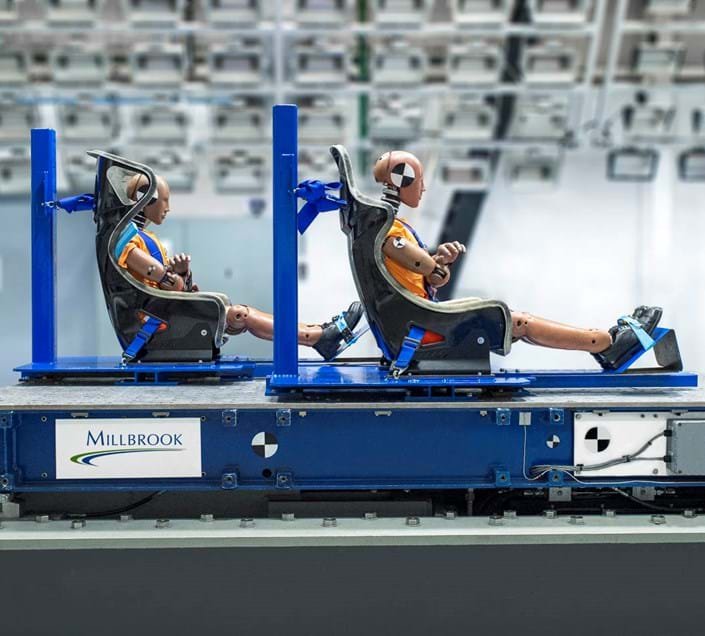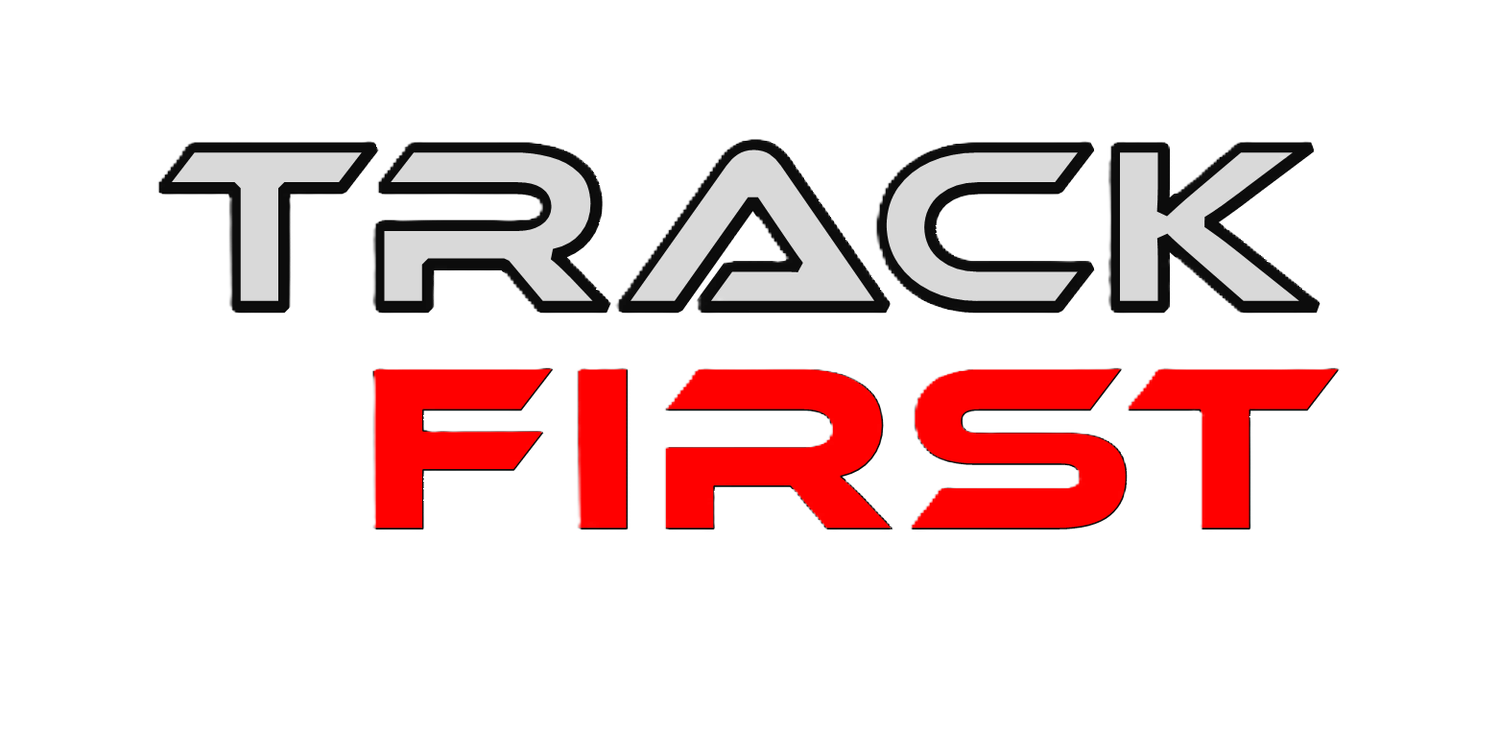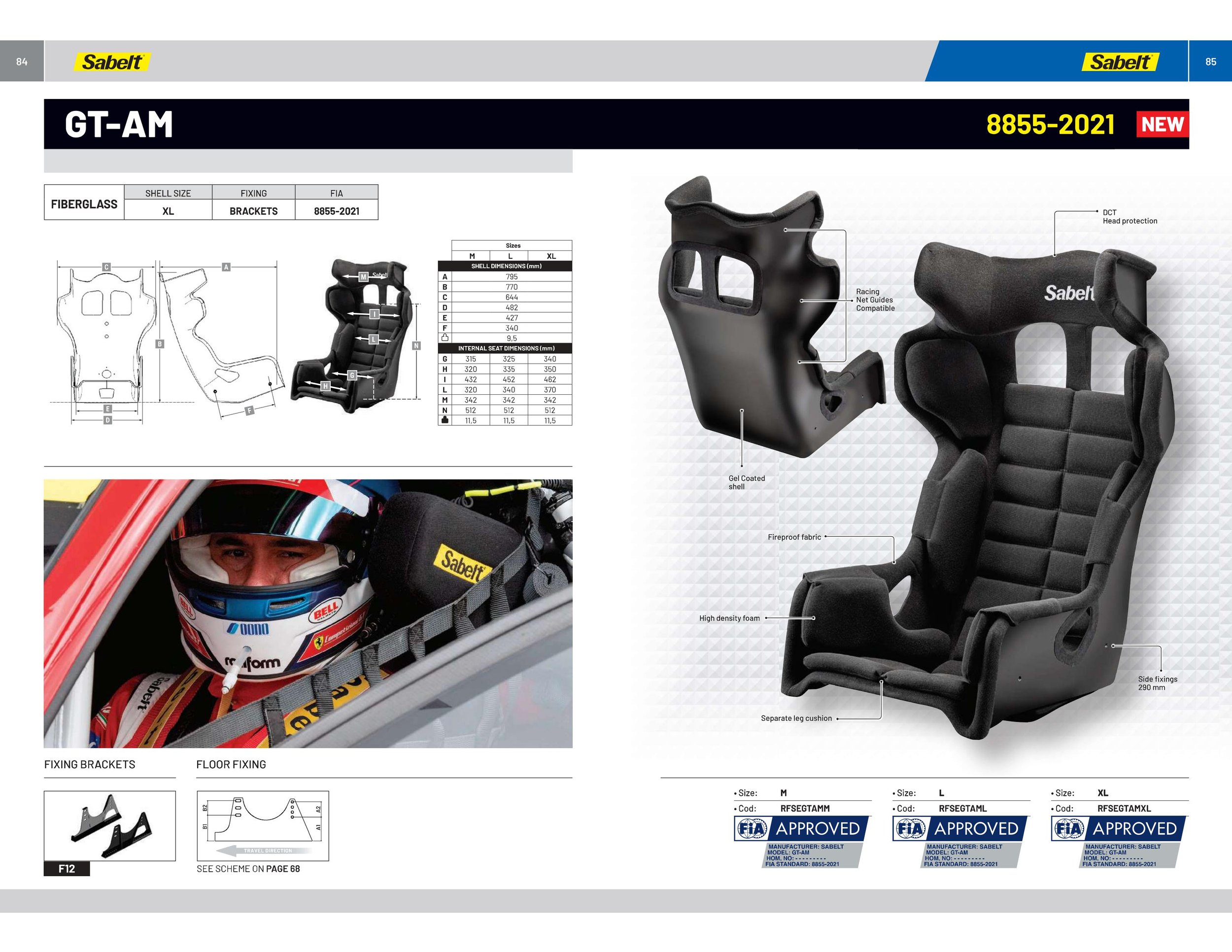
FIA 8855-2021

FIA 8855-2021
FIA 8855-2021 SEAT STANDARD
“The aim of the standard is to provide objective performance requirements for a new generation of competition seats, which are considerably in excess of those of the FIA standard 8855-1999…
The standard will ensure improved strength & support during rear impacts together with more extensive support of the pelvis, shoulder & head during side impacts…” FIA
The NEW FIA 8855-2021 is orchestrated to significantly improve the safety standards of the popular FIA 8855-1999 homologated seats - the seat that is commonly placed in most closed-cockpit, non-professional, track day cars
“The aim of the standard is to provide objective performance requirements for a new generation of competition seats, which are considerably in excess of those of the FIA standard 8855-1999…
The standard will ensure improved strength & support during rear impacts together with more extensive support of the pelvis, shoulder & head during side impacts…”
SUMMARY
The seats will be issued with a 10 year tag. This means a January 1, 2022 label will not be valid after 2032 AND a December 31, 2022 label will also not be valid after 2032
The seat has been tested to withstand up to 42G.
FIA 8855-1999 standard is still a valid homologation. Since 2021, series technical regulations have been allowed to upgrade to the new standard.
The FIA 8855-1999 has not been withdrawn and may not be, since the FIA along with other domestic governing bodies are aware that the demands of this new standard means it is not practical to mandate 8855-2021 for every competition race car model.
FIA 8855-2021 update link: https://www.fia.com/news/new-high-strength-cost-effective-seat-standard-set-improve-safety-across-motor-sport
The standard brings the homologation requirements 60% closer to the strength and safety demands of the professional FIA 8862-2009 seat homologation, but at a significantly lower cost. Although the new standard emphasizes increased strength and support, the R&D research optimized the latest technology, materials and manufacturing processes to make this standard cost-effective and affordable for teams and competitors, with a minimal weight increase.
FIA 8855-2021 - more…
The loads shall be increased until any one or more of the following conditions have been met:
1. The applied load on Side-L or Side-R exceeds 30 kN; (30 kN is 6,744 lbf - pounds force)
2. The combined deformation of Side-L and Side-R exceeds 200 mm;
3. The energy absorbed exceeds 0.6 kJ.
FIA 8855-2021 tests - changes…will not allow tubular steel frames
will include sea-side-head (halo) supports
the seat brackets will be approved as part of the seat system, so must be able to carry the same loads
the test seat will have the shell plus all energy-absorbing foams, cladding and slot covers.
will test 4-point seats (floor or side bracket mounted)
will test 6-point seats (above plus 2 additional mounting points in the seat back of the shell to attach the seat to the safety cage or chassis of the vehicle
the seat shall feature guides for racing nets FIA 8863-2013
FIA 8862-2009 - seat standard summary
FIA 8862-2009 is the advanced standard for racing seats. These seats are mandated by most professional racing series including Rally, Circuit and Hill Climbs.
The requirements for homologation are well in excess of FIA 8855-1999. It demands improved strength throughout and the seat must survive forces up to 70Gs.
Rigorous load tests are applied laterally, rearward and there is a crunch test.
Halos (side head restraints) are tested - which they are not in FIA 8855-1999
The seats are tested with their mounts, so the mounts become seat-specific.
For FIA 8862-2009 the fire protection standard is increased (75mm/min under ISO 3795)
The standard requires the manufacturer to use stiff, energy absorbing foam in the head, shoulder and pelvis areas.
The seats will be issued with a 10 year tag. This means a January 1, 2024 label will not be valid after December 31, 2034.
FIA 8855-1999 seat standard summary
A lower FIA seat standard, but presently accepted by the majority of US sanctioning bodies - non international
The seats comply to this standard by surviving impacts up to15-20 G loads, which is significantly less than half the loads of the new FIA 8855-2021 standard (42 G)
FIA 8855-1999 is gradually being replaced by the new FIA 8855-2021 regulations - check your series rules.
However, 8855-1999 may never disappear since the FIA recognizes that some older vehicle interiors cannot accept the FIA 8855-2021 seats.
In addition FIA 8855-2021 we have found to be significantly heavier than 8855-1999 seats.
TRACK FIRST
iCall: 234 380 5978
2230 Picton Pkwy. Akron, OH 44312
email: trackfirstinfo@gmail.com
email: Tim@track-first.com
FIA 8855-2021
“The aim of the standard is to provide objective performance requirements for a new generation of competition seats, which are considerably in excess of those of the FIA standard 8855-1999…
The standard will ensure improved strength & support during rear impacts together with more extensive support of the pelvis, shoulder & head during side impacts…”
file:///C:/Users/tim/Downloads/8855-2021_-_competition_seat_0.pdf
SUMMARY
The seats will be issued with a 10 year tag. This means a January 1, 2022 label will not be valid after 2032 AND a December 31, 2022 label will also not be valid after 2032
How many G-forces can the seat with stand - we have read up to 42G.
FIA 8855-1999 standard is still a valid homologation. However, since 2021, series technical regulations have been allowed to upgrade to the new standard and we suspect it will soon be universal for competitive racing.
The FIA 8855-1999 has not been withdrawn and may not be, since the FIA along with other domestic governing bodies are aware that the demands of this new standard means it is not practical to mandate them for every competition race car model.
FIA 8855-2021 update link: https://www.fia.com/news/new-high-strength-cost-effective-seat-standard-set-improve-safety-across-motor-sport
The loads shall be increased until any one or more of the following conditions have been met:
1. The applied load on Side-L or Side-R exceeds 30 kN;
(30 kN is 6,744 lbf - pounds force)
2. The combined deformation of Side-L and Side-R exceeds 200 mm;
3. The energy absorbed exceeds 0.6 kJ.
The NEW FIA 8855-2021 is orchestrated to significantly improve the safety standards of the popular FIA 8855-1999 homologated seats - the seat that is commonly placed in most closed-cockpit, non-professional, track day cars.
The standard brings the homologation requirements 60% closer to the strength and safety demands of the professional FIA 8862-2099 seat homologation, but at 15% of the cost. Although the new standard emphasizes increased strength and support, the R&D research optimized the latest technology, materials and manufacturing processes to make this standard cost-effective and affordable for teams and competitors, with a minimal weight increase.
FIA 8855-2021 tests - changes
will not allow tubular steel frames
will include sea-side-head (halo) supports
the seat brackets will be approved as part of the seat system, so must be able to carry the same loads
the test seat will have the shell plus all energy-absorbing foams, cladding and slot covers.
will test 4-point seats (floor or side bracket mounted)
will test 6-point seats (above plus 2 additional mounting points in the seat back of the shell to attach the seat to the safety cage or chassis of the vehicle)
the seat shall feature guides for racing nets FIA 8863-2013 (see 4.2.4 file:///C:/Users/tim/Downloads/8855-2021_-_competition_seat_0.pdf)
The SPINE from Sabelt is
FIA 8855-2021 compliant
Sabelt GT-AM FIA 8855-2021
The GT-AM, like the SPINE, has an XL shell and uses the seats internal foam padding to change the sizing. Medium, Large and XLarge will be offered.
SPARCO - THE MATRIX & THE MASTER










